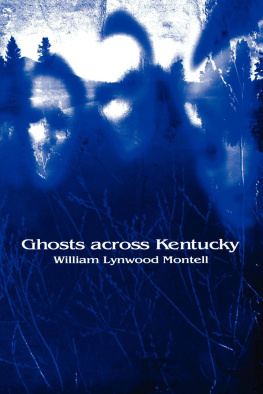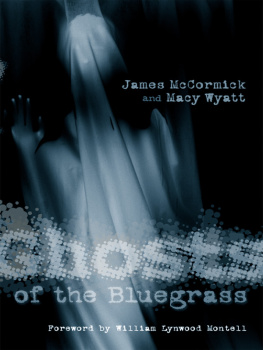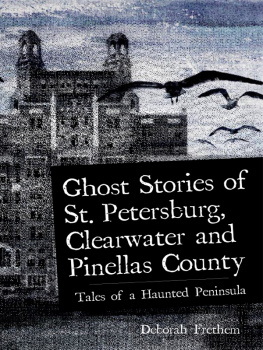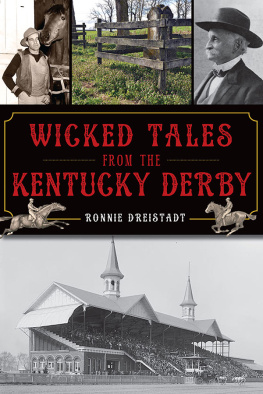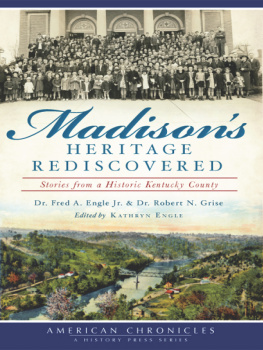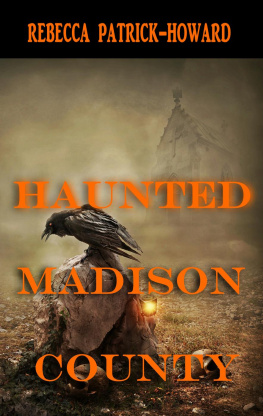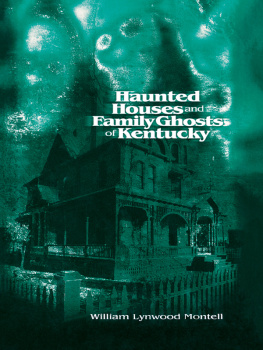Contents
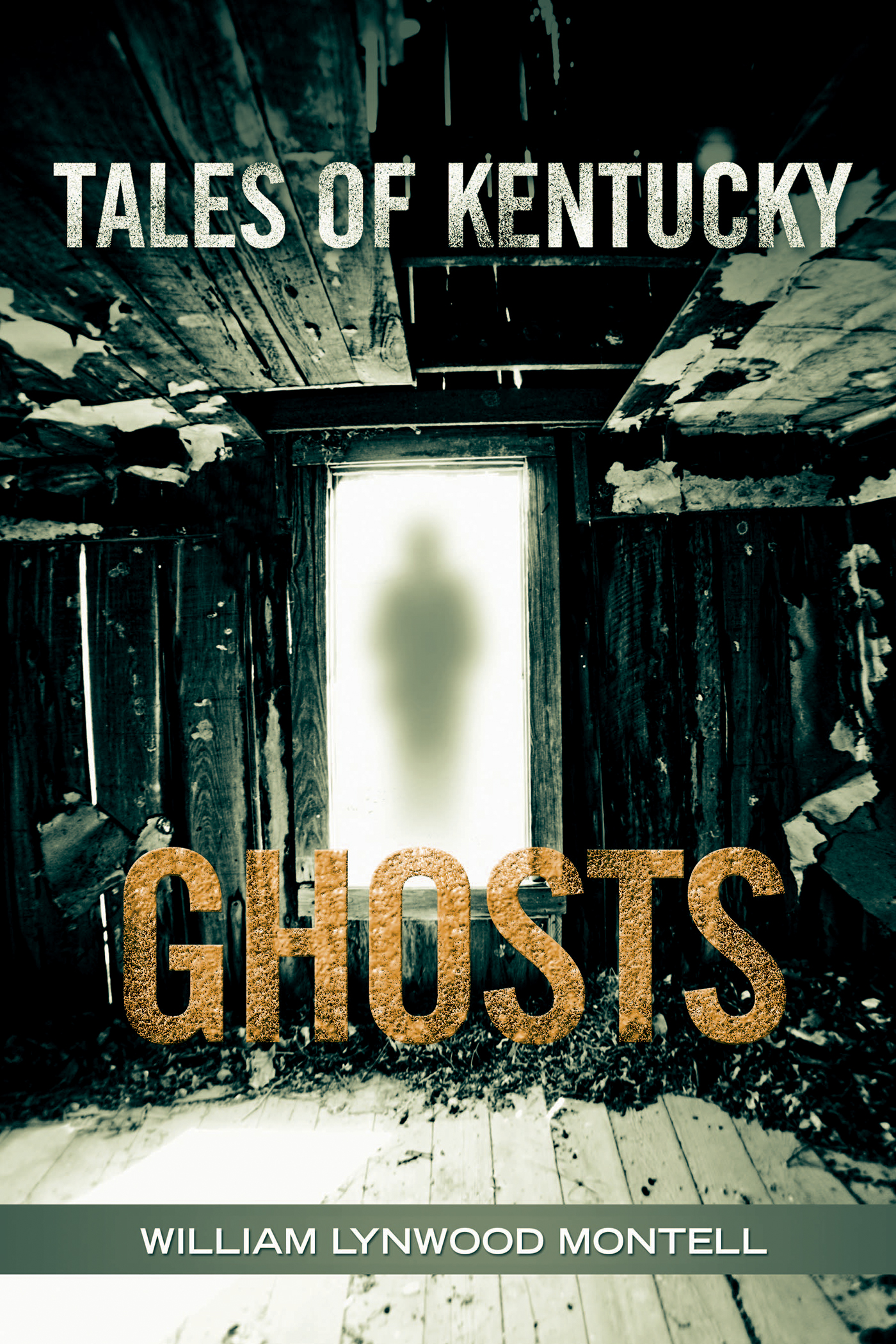
Tales of Kentucky Ghosts
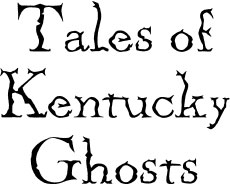
WILLIAM LYNWOOD MONTELL

Copyright 2010 by The University Press of Kentucky
Scholarly publisher for the Commonwealth,
serving Bellarmine University, Berea College, Centre College of Kentucky, Eastern Kentucky University, The Filson Historical Society, Georgetown College, Kentucky Historical Society, Kentucky State University, Morehead State University, Murray State University, Northern Kentucky University, Transylvania University, University of Kentucky, University of Louisville, and Western Kentucky University.
All rights reserved.
Editorial and Sales Offices: The University Press of Kentucky 663 South Limestone Street, Lexington, Kentucky 40508-4008 www.kentuckypress.com
14 13 12 11 10 51 4 3 2 1
Library of Congress Cataloging-in-Publication Data
Montell, William Lynwood, 1931
Tales of Kentucky ghosts / William Lynwood Montell.
p. cm.
Includes bibliographical references and index.
ISBN 978-0-8131-2593-0 (hardcover : alk. paper)
1. GhostsKentucky. I. Title
BF1472.U6M6625 2010
133.109769dc22 2010020653
This book is printed on acid-free recycled paper meeting the requirements of the American National Standard for Permanence in Paper for Printed Library Materials.

Manufactured in the United States of America.

In memory of my parents, Willie and Hazel Montell, and my grandfather, Chris Chapman, all of whom were master storytellers; and to my wife, Linda; her daughter, Lisa, and my children, Monisa and Brad, and their progeny; and to all Kentuckians whose devoted interest in storytelling across the years made this book possible.
INTRODUCTION
After enjoying my earlier collections of Kentucky ghost stories, numerous readers pleaded for more. I therefore began gathering additional tales in 2007 by driving around the state, making telephone requests, and contacting staff members at college and university archives. The oral stories recorded for this book, gathered from numerous counties across Kentucky, are all new.
In earlier times, these interesting, sometimes scary, accounts were known as ghost tales. Some residents, especially in western Kentucky, called them scary stories, and others simply called them haunt tales, haint tales, or ghost tales. Back then, tale telling was a common social activity on Saturday nights and Sunday afternoons. Young kids sat around, especially at night, to hear what they considered to be realistic accounts. They would get so scared they would jump out of their chairs, or hop up off the floor, run to their beds, and cover themselves with quilts. Sometimes they might even wet the bed if they were too afraid to get out of bed to go to the bathroom or to run outside.
The stories in this book are intricately tied to the critical element of belief in the supernatural, which is typically motivated by hearing an account of the event from a friend or relative. People in all walks of life and in all world cultures cling to their beliefs in the supernatural and to stories about paranormal experiences. Typically, people are not inclined to believe written accounts, but, told orally, these stories gain a power and felt veracity that are hard to dismiss. Folklorists generally agree that such terms as belief and belief tales should be used to describe the types of supernatural occurrences described in this volume.
As I have advised in previous books, readers should adopt an open mind and an understanding, tolerant attitude toward those who believe they have personally encountered a ghost as an unexplained phenomenon. Many reputed mysteries and occurrences cannot be explained away by scientific means, even in todays advanced world of technology. However, people are often unwilling to believe in the paranormal, regardless of who the storyteller is, because they fear being judged or intimidated by disbelievers. Virtually every story in this book is told as an event that really happened. Thus, it is hard to prove or disprove what is described as an actual encounter with a ghost or ghosts.
Some of the ghost stories included in this book provide historical content: they describe beliefs and practices now remembered only by the older generation. Recording the stories helps to preserve the historical and personal information for future generations. It is sad to think that many strange and interesting stories will be lost because those familiar with the incidents choose to keep them secret for personal reasons.
Some of the stories in this book were told by individuals who firmly believe they have encounteredthrough sound, sight, or feelingthe disembodied spirit of a deceased person or animal that has materialized by some means unknown to them. The deceased may be a friend, a family member, or a distant relative. It is hard for listeners to question the validity of stories that are told by people they love and respect.
While some ghosts are reputedly sinister and frightening, most are not. Ghosts, as described in told-to-be-true oral narratives, are typically not hostile. They generally appear to be indifferent to the living; some of them are seemingly timid and easily deterred. Most ghosts go about their business in a very unpretentious manner and appear not to want any fanfare. They seem to have a role to perform. If it can be accomplished without contact with living persons, ghosts apparently are quite content to remain unseen.
Tale swapping is a dynamic process in family and other intimate small groups. There is a constant give and take, even by those who do not engage in the storytelling. The constant eye contact and the listeners uneasy shifting reaffirm belief and intensify the group communication process. Individual narrative art is rewarded by the oohs and aahs and the occasional groans, shudders, and even shrieks from the audience when a performer has finished the tale.
Gathering stories for Tales of Kentucky Ghosts was a difficult process, as most of the old-time storytellers are now gone. The parents and grandparents of present-day parents and grandparents were crucial in conveying stories, especially family history accounts, to their progeny. Regrettably, television and other forms of electronic transmission have pushed aside interest in listening to tales and learning about older times. People whose grandparents and great-grandparents are still alive would do well to persuade them to make oral recordings of their childhood memories and impressions. Otherwise, much of their family and cultural heritage will be lost. In this regard, ghost stories are treasure troves, thanks to the way they provide information about old houses, pre-pavement roads, family cemeteries, and so on.
For this book, I was able to collect ghost stories from individuals and from college and university archives in more than seventy counties across Kentucky, ranging from Ballard, Graves, and McCracken in western Kentucky, to Lewis, Greenup, Boyd, Lawrence, Martin, Pike, and Harlan in the Appalachian section. The bulk of stories in this book focus on ghostly events in Jefferson, Edmonson, Butler, Barren, Logan, Metcalfe, Monroe, Cumberland, and Wayne counties.


